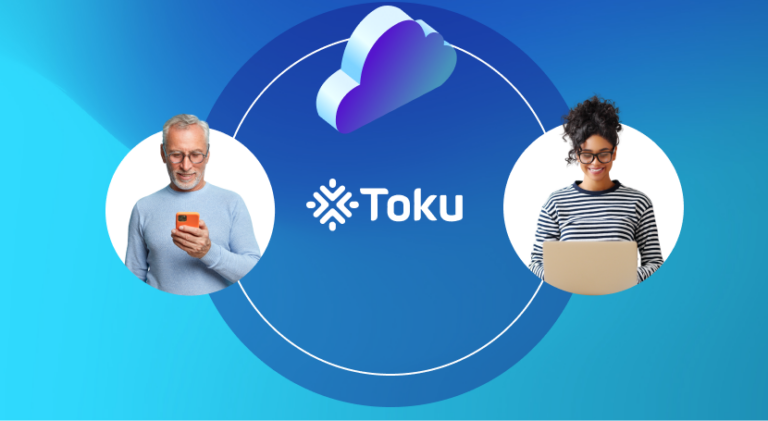PBX still has a lot to offer and it’s often best to combine traditional systems with cutting-edge technology for the best results.
When it comes to customer support, some companies strongly believe in keeping the call centre in house as it’s worth the additional costs. Meanwhile, other companies choose to look at contact centres as a ‘cost-centre’, and hence outsource the function believing that it is more affordable.
But do enterprises really need to pick one option over the other?
From our experience serving enterprises that are trying to scale their contact centres, the answer is an emphatic, “NO.”
In fact, many organisations see advantages in having both in-house customer support teams and any external BPOs (Business Process Outsourcing) they may be engaging. The bigger question customer experience (CX) leaders are asking is, “How do we ensure in-house and outsourced call centres work together to deliver a seamless CX?”
In this blog post, we’ll first explore why your business shouldn’t have to go all in on either inhouse or outsourced call centre options. Then we will share a couple of strategies on how to make both options work together in a complementary fashion.
Rethinking the in-house vs outsourced call centre divide
Deciding to make your company go all-in on either in-house or an outsourced contact centre is not as simple as one might think.
For example, if you opt to outsource the contact centre totally, it may cost less as you expand customer support operations internationally. However, according to Gartner research, 75% of savings from outsourcing to a BPO can disappear within 18 months if you don’t manage the vendor effectively!
OUCH!
Similarly, if you choose to go all-in on in-house customer support, you might gain more control over the delivery of the customer experience. But it will cost you. From infrastructure and compliance certification to staffing, your in-house call centre team is going to be responsible for it all. You must plan adequate manpower and resources to support the in-house call centre – otherwise, the level of CX you provide might not be as seamless and controlled as you’d like.
With a hybrid approach to BPO customer support outsourcing, an enterprise doesn’t have to worry so much about committing fully to in-house or outsourced call centres. Instead, you can refocus on what’s truly important: prioritising your CX!
Here’s how a hybrid approach can help both in-house and BPO contact centres work more closely together to support a better customer experience.
1. Ensure the BPO is open to using the same tech stack your in-house call centre uses
If you are open to exploring the hybrid option, the priority is to keep both the BPO vendor and your in-house customer support on the same page. This means the BPO needs to flexible and open to using the same Contact Centre as a Service (CCaaS) platform and other business tools you work with.
If they are not open to this, how can you expect information to flow fast and smoothly between in-house and BPO customer support? It’s practically impossible when the BPO uses one CCaaS platform to deliver customer support, and your in-house uses a different CCaaS platform that doesn’t completely sync the relevant customer details seamlessly.
The end result? A disjointed CX!

Get monthly nuggets of wisdom for all things customer experience in your inbox
2. Connect silos with data flows wherever possible to empower agent experience
Yup – having the same CCaaS and other tech for both in-house and BPO customer support teams goes a long way towards breaking information silos now that everyone has access to the same information on the customers.
However, that’s not the only silo to worry about. For example, there’s the centralised – remote contact centre silo. Picture this: more and more contact centres are moving towards hybrid working arrangements. Gartner research anticipates that “by 2024, 30% of organizations will have moved their contact centres’ operations off-premises, with a 60% jump in all agents working from home.” In other words, your agents – both inhouse and BPO – need to be able to work effectively anywhere. Their location, whether at home or in an office, should not limit their capability to deliver the best customer support possible.
With the right technology, for example, a cloud-based CCaaS platform that ensures both remote n office-based agents can access the same level of information, contact centres have a great way to improve the agent experience. And judging by several responses at a recent roundtable that Toku moderated recently on Scaling contact centre operations effectively in APAC, many CX leaders want to prioritise empowering their agent experience.
They’re looking at contact centre platforms that empower agents with the right resources like a complete, unified screen that gives them the exact same details and experience – regardless of whether they’re working remotely or in the office. Additionally, they’re looking for platforms that reduce the burden on their agents – for example, allowing them to access the ticketing system or CRM without having to switch software on their computer. This is possible when a CCaaS software has customised integrations with your business tools that feed the data from the tools into the centralised contact centre software where anyone can access it in one place.
By breaking silos wherever possible in your contact centre operations, you’ll be able to ensure information is accessible and flows effortlessly between in-house and BPOs, as well as remote and office-based agents.
3. Ensure consistent training for all agents
One of the biggest worries when it comes to outsourcing your contact centre is the issue of agent training consistency. Outsourced employees generally have lower product knowledge and are likely to have less knowledge of your company than a dedicated in-house customer support team. Although they’ll still be trained before starting work, they may only know the basics and won’t be able to handle more technical or complex calls.
So if you want to ensure they are up to scratch, you need to support them with training that’s consistent. Again, tech can help in this area.
For example, if all your agents are working on the same CCaaS, and the platform integrates with your chosen workforce management tool, you now have a powerful combo to drive consistent training while fitting in to the agents’ schedule. The better your agents are trained – no matter if they’re in-house or BPO – the more they’ll be able to understand customers better and deliver a higher level of customer support.
4. Democratise access to actionable insights
Getting customer data is one thing. Getting actionable insights from them and making them available to all teams is another.
It sounds like a painful process, but the reality is it doesn’t have to be that way. In fact, you can start by taking the tiny step of centralising your customer engagement data – and the resulting insights – in one single source of truth – an omnichannel contact centre.
As many CX leaders agreed at our recent contact centre roundtable, this is the first step to getting all the data and insights that you need to meet your customers’ expectations, improve agent experience, and ultimately build a customer experience with industry-beating NPS scores.
The reason omnichannel CCaaS is so critical is it brings reporting from different tools in one place, which makes monitoring customer engagements and spotting trends and patterns, much easier for your managers. When access is democratised, the lines between inhouse and BPO contact centres start to blur – which is precisely what you want in a seamless customer experience that feels unified and whole – not fragmented and confusing.
 John Tolton
John Tolton 

 Girish Dharmaraj
Girish Dharmaraj 
 Ana Castrillon
Ana Castrillon 
 Rosaline Oh
Rosaline Oh